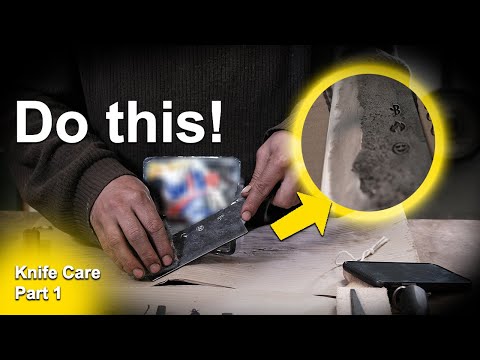
4d9a8ca39b1b4c5af7159e70345f0de5
Having a rusty kitchen knife can be a real nuisance. Not only does it look unsightly, but it can also make it difficult to cut through food. Fortunately, removing rust from kitchen knives is a relatively simple process. In this article, we will provide a step-by-step guide on how to remove rust from kitchen knives and restore them to their former glory.
What is the best way to remove rust from kitchen knives
Rust can be a real nuisance when it comes to kitchen knives. Not only does it make them look unsightly, but it can also make them difficult to use. Fortunately, there are several ways to remove rust from kitchen knives and restore them to their former glory.
Using White Vinegar
One of the most effective and inexpensive ways to remove rust from kitchen knives is to use white vinegar. Simply soak the knife in a bowl of white vinegar for a few hours, then scrub the rust away with a soft cloth or brush. For tougher rust spots, you may need to use a steel wool pad. Once the rust is gone, rinse the knife with warm water and dry it thoroughly.
Using Baking Soda
Another great way to remove rust from kitchen knives is to use baking soda. Make a paste of baking soda and water, then apply it to the rusty areas of the knife. Let it sit for a few minutes, then scrub the rust away with a soft cloth or brush. Rinse the knife with warm water and dry it thoroughly.
Using Lemon Juice
Lemon juice is another great way to remove rust from kitchen knives. Simply soak the knife in a bowl of lemon juice for a few hours, then scrub the rust away with a soft cloth or brush. For tougher rust spots, you may need to use a steel wool pad. Once the rust is gone, rinse the knife with warm water and dry it thoroughly.
Using Salt and Lime Juice
If you don’t have any of the above items on hand, you can also use salt and lime juice to remove rust from kitchen knives. Simply mix equal parts of salt and lime juice to make a paste, then apply it to the rusty areas of the knife. Let it sit for a few minutes, then scrub the rust away with a soft cloth or brush. Rinse the knife with warm water and dry it thoroughly.
Conclusion
Rust can be a real nuisance when it comes to kitchen knives, but it doesn’t have to be. With the right tools and techniques, you can easily remove rust from kitchen knives and restore them to their former glory. Whether you use white vinegar, baking soda, lemon juice, or salt and lime juice, you can be sure that your kitchen knives will be looking as good as new in no time.
How do you clean kitchen knives step by step
Kitchen knives are essential tools in the kitchen, and it is important to keep them clean and sharp. Cleaning kitchen knives is a simple process that can be done in a few easy steps. Here is a step-by-step guide on how to clean kitchen knives.
Step 1: Soak the Knife
The first step in cleaning kitchen knives is to soak them in warm, soapy water. This will help to loosen any food particles that may be stuck to the blade. Let the knife soak for at least 10 minutes before proceeding to the next step.
Step 2: Scrub the Knife
Once the knife has been soaked, use a soft-bristled brush to scrub the blade. Be sure to scrub both sides of the blade, as well as the handle. Use a gentle circular motion to ensure that all food particles are removed.
Step 3: Rinse the Knife
Once the knife has been scrubbed, rinse it off with warm water. Be sure to rinse both sides of the blade, as well as the handle. Make sure that all soap residue is removed.
Step 4: Dry the Knife
Once the knife has been rinsed, use a clean, dry cloth to dry the blade and handle. Be sure to dry both sides of the blade, as well as the handle. Make sure that all moisture is removed.
Step 5: Sharpen the Knife
Once the knife has been dried, it is time to sharpen it. Use a sharpening stone or a sharpening steel to sharpen the blade. Be sure to sharpen both sides of the blade, as well as the handle.
Make sure to follow the manufacturer’s instructions for sharpening the knife.
Step 6: Store the Knife
Once the knife has been sharpened, it is important to store it properly. Store the knife in a knife block or in a drawer with other kitchen knives. Be sure to keep the blade away from other objects to avoid dulling or damaging the blade.
Cleaning kitchen knives is a simple process that can be done in a few easy steps. By following these steps, you can ensure that your kitchen knives are clean and sharp. This will help to keep your kitchen knives in top condition and make them last longer.
What is the best homemade rust remover
Rust is a common problem that can affect metal surfaces, making them look unsightly and reducing their lifespan. Fortunately, there are a number of homemade rust removers that can help you get rid of rust without spending a lot of money.
Vinegar
Vinegar is one of the most popular and effective homemade rust removers. It is a mild acid that can dissolve rust and is safe to use on most surfaces. To use vinegar to remove rust, simply soak the affected area in white vinegar for several hours and then scrub the rust away with a wire brush.
Baking Soda
Baking soda is another effective homemade rust remover. It is a mild abrasive that can be used to scrub away rust. To use baking soda to remove rust, make a paste by mixing baking soda with water and then apply it to the affected area. Let it sit for a few minutes and then scrub the rust away with a wire brush.
Lemon Juice
Lemon juice is another natural rust remover that is safe to use on most surfaces. To use lemon juice to remove rust, simply soak the affected area in lemon juice for several hours and then scrub the rust away with a wire brush.
Salt and Lime Juice
Salt and lime juice is another effective homemade rust remover. To use this method, mix equal parts of salt and lime juice and then apply it to the affected area. Let it sit for a few minutes and then scrub the rust away with a wire brush.
Conclusion
There are a number of homemade rust removers that can help you get rid of rust without spending a lot of money. Vinegar, baking soda, lemon juice, and salt and lime juice are all effective rust removers that are safe to use on most surfaces.
How do you remove surface rust from a stainless steel knife
Stainless steel knives are a popular choice for many kitchens, but they can be prone to rusting if not properly cared for. Rust can be unsightly and can even affect the performance of the knife. Fortunately, there are a few simple steps you can take to remove surface rust from a stainless steel knife.
Step 1: Clean the Knife
The first step in removing surface rust from a stainless steel knife is to clean it. Use a mild dish soap and warm water to remove any dirt or debris from the blade. Make sure to rinse the knife thoroughly and dry it with a soft cloth.
Step 2: Use a Rust Remover
Once the knife is clean, you can use a rust remover to remove the surface rust. There are a variety of rust removers available, including citric acid, vinegar, and baking soda. Each of these can be used to remove rust from a stainless steel knife. Simply apply the rust remover to the blade and let it sit for a few minutes before rinsing it off.
Step 3: Polish the Knife
Once the rust has been removed, you can polish the knife to restore its shine. Use a soft cloth and a stainless steel polish to buff the blade. This will help to remove any remaining rust and will also help to protect the knife from future rusting.
Step 4: Store the Knife Properly
Finally, make sure to store the knife properly to prevent future rusting. Keep the knife in a dry place and make sure to dry it thoroughly after each use. You can also use a knife guard or sheath to protect the blade from moisture.
By following these simple steps, you can easily remove surface rust from a stainless steel knife. With proper care and maintenance, your knife will stay rust-free and will last for many years to come.
We hope this guide has been helpful in teaching you how to remove rust from kitchen knives. With the right tools and a bit of patience, you can have your knives looking like new in no time. Goodbye and good luck!
















